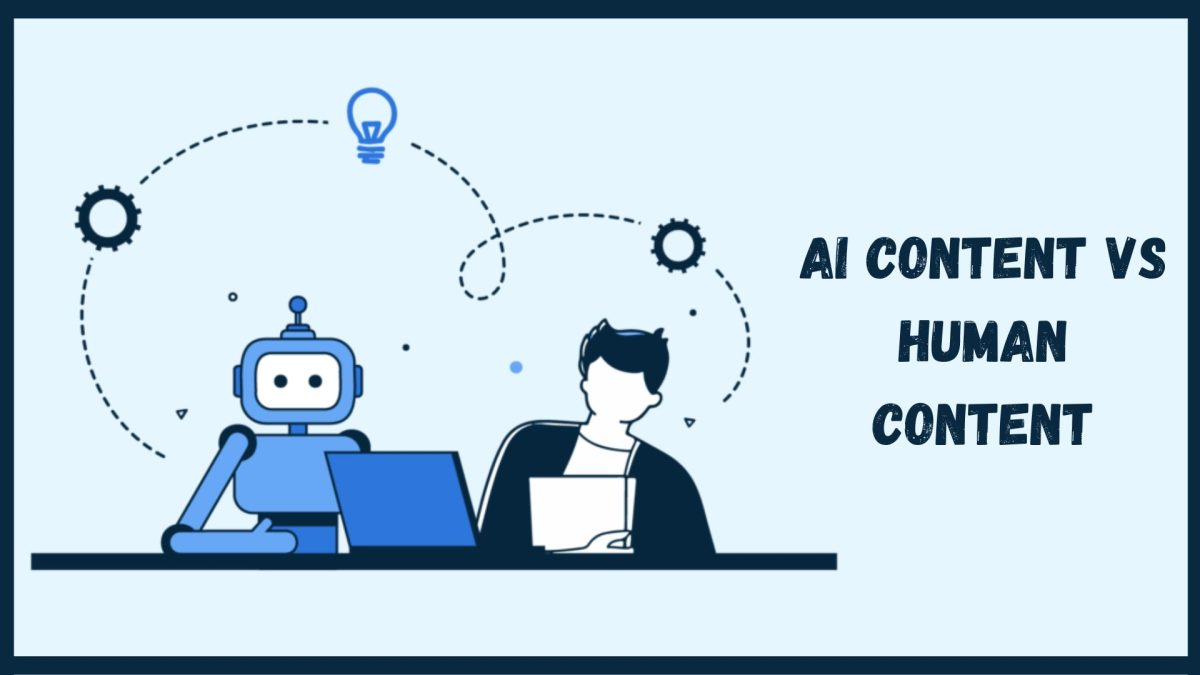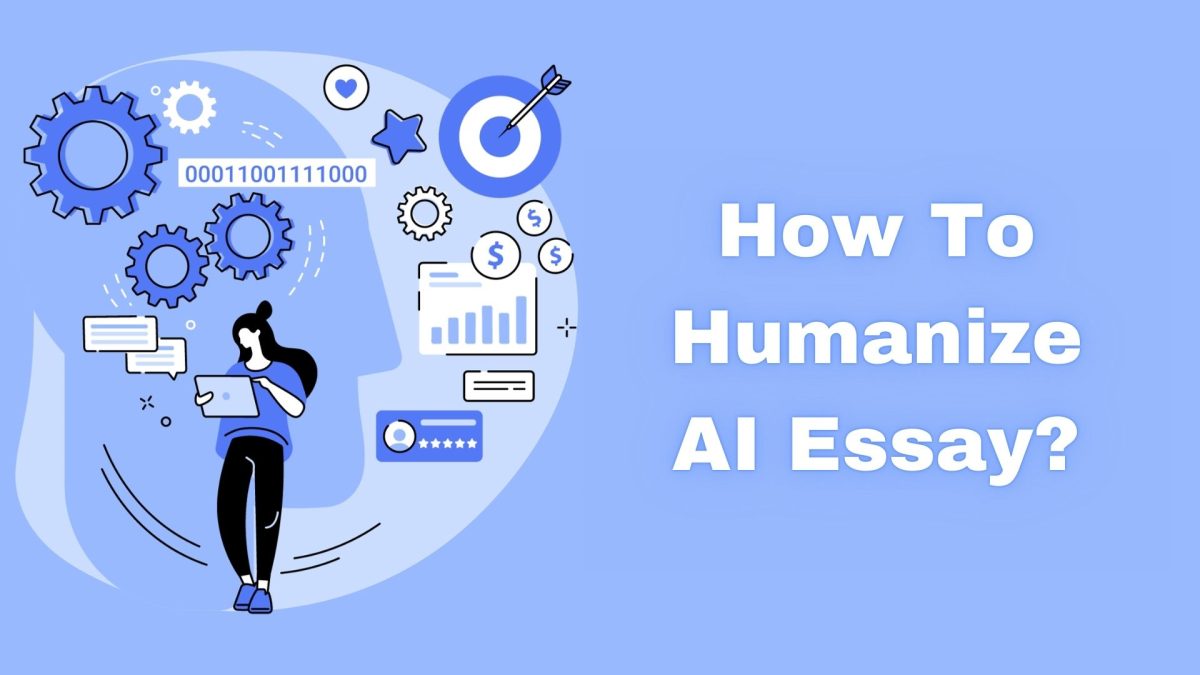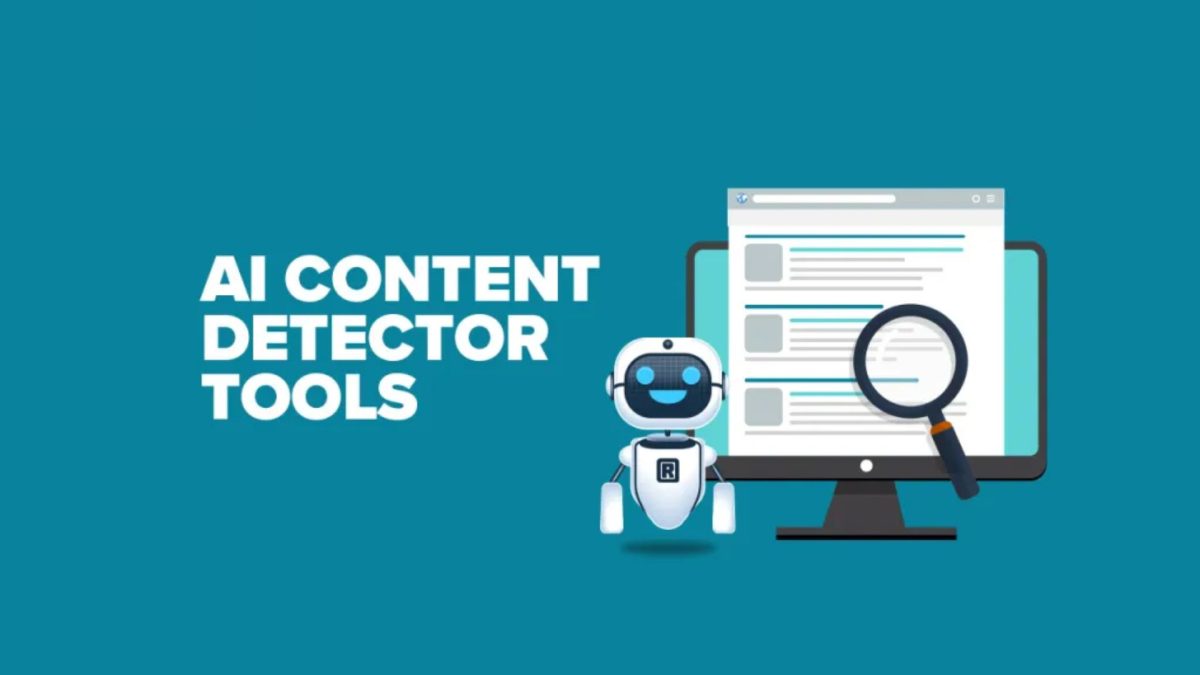If you look at accessible content on any topic nowadays, you will find that it is not solely human-centric; instead, the majority of it includes content created by AI using various AI tools.
Many of you reading this text may not understand that either it is artificial intelligence (AI) developed or has been solely written by a human who has shared their experiences.
Come with us as we examine these and other related topics, providing fresh viewpoints on how people and AI interact.
Differentiating these two involves both technical and non-technical factors. Let’s visualize how they differ.
What Is An AI-Generated Content?
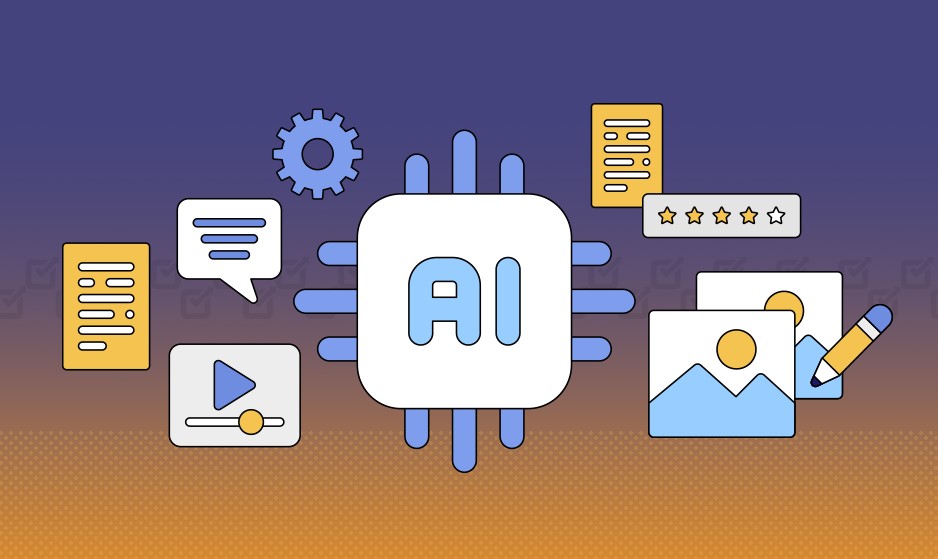
AI-generated copy, natural language generation (NLG), is becoming increasingly prevalent. Skilled writers can manage the tool to produce uncanny or unusual writing, but using AI tools in a sloppy or untrained manner soon results in redundant or repeated writing. Additionally, search engines dislike this kind of content.
To counteract the rise of AI-generated copy, Google just updated its algorithm. Websites that use content produced by an automatic system will be detected and penalized by the new algorithm; these websites do not want their home pages to be filled with generic, machine-written content.
AI v/s human text | Main difference
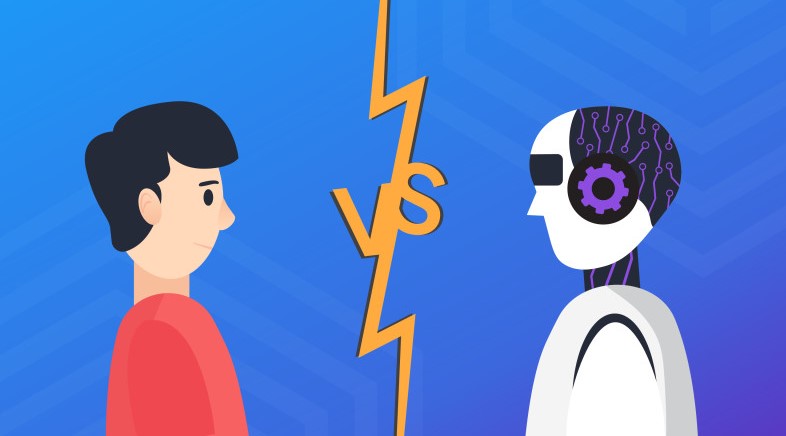
Understanding a text’s perplexity and burstiness before comparing it to that of humans is helpful. These are the two most crucial technical variables when comparing text produced by AI with that written by humans.
Perplexing
A statistic called perplexity is used to assess how well language models predict the subsequent word in a string of words. It gauges how accurately the model can predict a word’s probability of occurrence given its prior context.
A lower perplexity score indicates better predictability and language comprehension, whereas a higher one suggests more significant uncertainty and less precise predictions.
Human-written content is more sorted than AI-generated text because the human mind is much more sophisticated than current AI models.
Burstiness
The term “burstiness” describes the variance in sentence length and structure within a piece of text. It gauges the level of variation and unpredictableness in sentence structure.
Artificial intelligence (AI)- generated content typically follows a more consistent and regular rhythm, whereas human writing frequently displays lulls and surges, using a mix of short and lengthy phrases.
While lesser burstiness represents a more robotic and boring style, higher burstiness implies better creativity, spontaneity, & engagement in writing.
Human-written content typically has a high burstiness score, similar to the confusion score.
Other AI v/s human text differences:
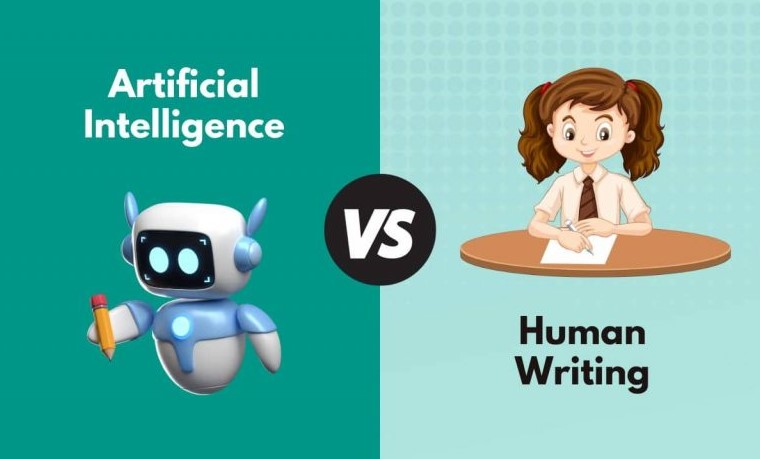
Below are all the differences between AI & human text.
Creativity and originality
Human Writing: When people write, they frequently incorporate their own experiences, feelings, and inventiveness into their work. A writer’s mind is naturally creative; it draws on a lifetime of events, emotions, and imagination. Foreseeing what a brilliant writer would say throughout their narrative is complex. The narrative creates a clear mental image.
AI Writing: AI, conversely, lacks consciousness and life experiences. It produces text using the patterns it has discovered in its training data. It can somewhat resemble creativity, but it doesn’t actually “create” in the traditional sense of the word. How would AI evaluate a brand-new TV? It wouldn’t understand how. All it will do is write what it believes you want to hear.
Foundation and complexity
Human writing: Humans can naturally comprehend complex cultural allusions and contextual subtleties. We are also able to understand the feelings and underlying meanings of words. Additionally, this explains why the best writing always appears so “magical.” A knowledgeable author provides background information from sources the audience wouldn’t otherwise bring up.
Writing by AI: AI has trouble understanding context, mainly when subtleties or cultural allusions are present. It may produce grammatically sound statements but miss the spirit or more profound meaning. It’s a bit simplistic to compare LLMs to autofill on your smartphone, but that’s all AI is now.
Considerations of ethics and morality
Human writing: Writers frequently consider their works’ ethical and sociological ramifications. Most people can convey their principles through writing, although this isn’t always true of journalists nowadays.
AI writing: AI is morally and ethically devoid. It cannot decide what is valuable. Without the algorithm’s knowledge, the stuff it produces may be offensive or unsuitable. It will take decades to uncover the massive issue of algorithmic prejudice.
Learning and evolution
Human content: Over time, human writers develop and change. They can change their style, gain a distinct voice, and learn from criticism. For this reason, we like authors, brands, influencers, etc. We hold on to their true selves, ideas, and opinions.
AI content: AI models don’t develop like people but may be updated and educated on fresh data. At their current technological stage, they lack personal growth, and their learning is limited by the material they are fed.
Handling errors
Writing by humans: Humans may make errors due to ignorance or carelessness. However, they can comprehend and rectify them based on the context. Although it’s not always possible to spot someone disseminating misleading information, writing that lacks confidence and trustworthiness is a significant warning sign.
Writing by AI: Artificial intelligence may produce believable-looking mistakes. It can confidently generate inaccurate or nonsensical information because it lacks comprehension. Ask ChatGPT a concern that you know it won’t be able to answer. It simply says things it believes you want to hear and experiences hallucinations.
Despite the distinctions mentioned above, many businesses are figuring out how to incorporate AI into their writing processes to boost creativity and productivity. However, as discussed in the article above, if you assume that Google will accept material created by AI tools, the answer is ‘no’.
However, if you can humanize the AI material, there is a helpful way to incorporate it into your writing. If you’re unsure how to do this, one of the best tools for achieving this is “humanize AI.”
How could humanize AI tool be helpful?
Enhancing AI-generated content to make it more relatable to human readers is known as “humanizing AI text.” This change guarantees no robotic flavor, and the information is straightforward, relatable, and captivating. Humanizing AI text includes several components, including empathy, natural language usage, personalization, simplicity, engagement, and cultural sensitivity. These components work together to transform AI text into natural and human-like material.
Let’s examine all of its benefits so that you can learn more about it and become more acquainted with it.
The Humanize AI text tool’s benefits:
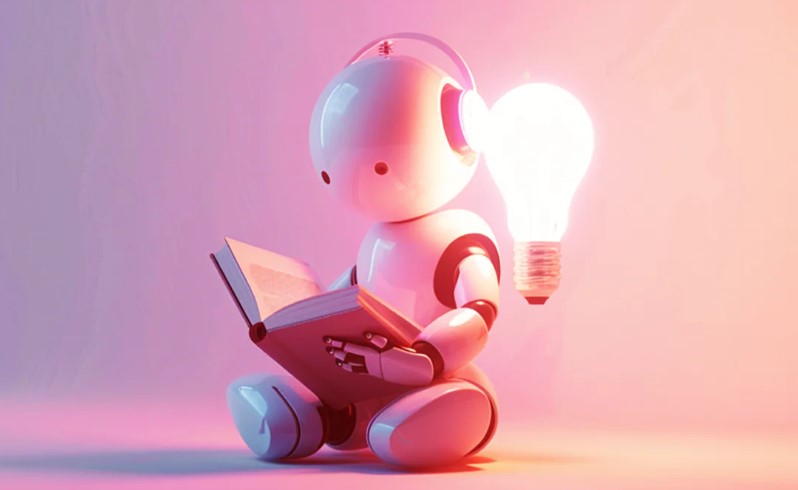
With its many advantages, our AI Humanizer Tool is revolutionizing the content creation industry.
Authentically humanizes AI content.
It ensures relatability and authenticity by converting AI-generated material into content that has a human touch.
Assurance of original content
Originality is essential when writing. Our program ensures that each piece is unique by providing content free of plagiarism.
Avoids AI detectors
This tool’s content quickly passes AI detection tests because it looks completely human-written.
SEO-friendly results
The technology makes sure the material stays SEO-friendly by smartly retaining essential keywords.
Increases output
With this tool, you may increase your productivity in turning AI text into content that looks human while saving time and effort.
Outstanding quality of content
Anticipate excellent content that uses natural language without strange word choices and grammatical problems.
Superior accuracy
Aims for a human score of 100% while retaining accuracy and the original meaning and context.
Preserves context and meaning
The technology guarantees consistency by maintaining the original context and meaning of the supplied content.
Conclusion
Therefore, the blog mentioned above has clarified to everyone reading this article the difference between AI content and content focused on humans. It has also answered any questions or concerns they may have had about which is better.
We hope the information above has helped you understand how to humanize AI-generated content and how it could be more beneficial. However, if you have any questions or concerns, please contact us; our team of experts will happily answer them.
Frequently Asked Questions
Q1. Is it possible for AI to produce content that has the same authentic feel as writing by a human?
Ans. Although AI can create valuable and instructive content, it might not have the same depth, subtlety, and emotional resonance as human writers. Therefore, provide feedback or modify the content to meet your needs better. So that’s why even if you are using AI-generated content, you can add the touch of human tone to it by using humanize AI, which preserves the authenticity and originality of the data.
Q2. Will human content creators eventually be replaced by AI?
Ans. Artificial intelligence is unlikely to replace human content entirely. Creators primarily function as a tool to expedite and simplify content generation, freeing human attention for tasks requiring imagination and instinct.
Q3. Does using AI to create content make sense financially?
Ans. Using AI for content creation can be economical, mainly when producing large amounts of information. The material cannot be compromised since human content authors provide depth, originality, and emotional resonance.
Q4. What are the advantages of AI-produced content?
Ans. Compared to human-generated content, AI content can be created more quickly and on a larger scale. Additionally, it can use data analysis to produce highly customized content. AI tools are also user-friendly and accessible to novices. It is far less expensive than hiring a professional article writer.
